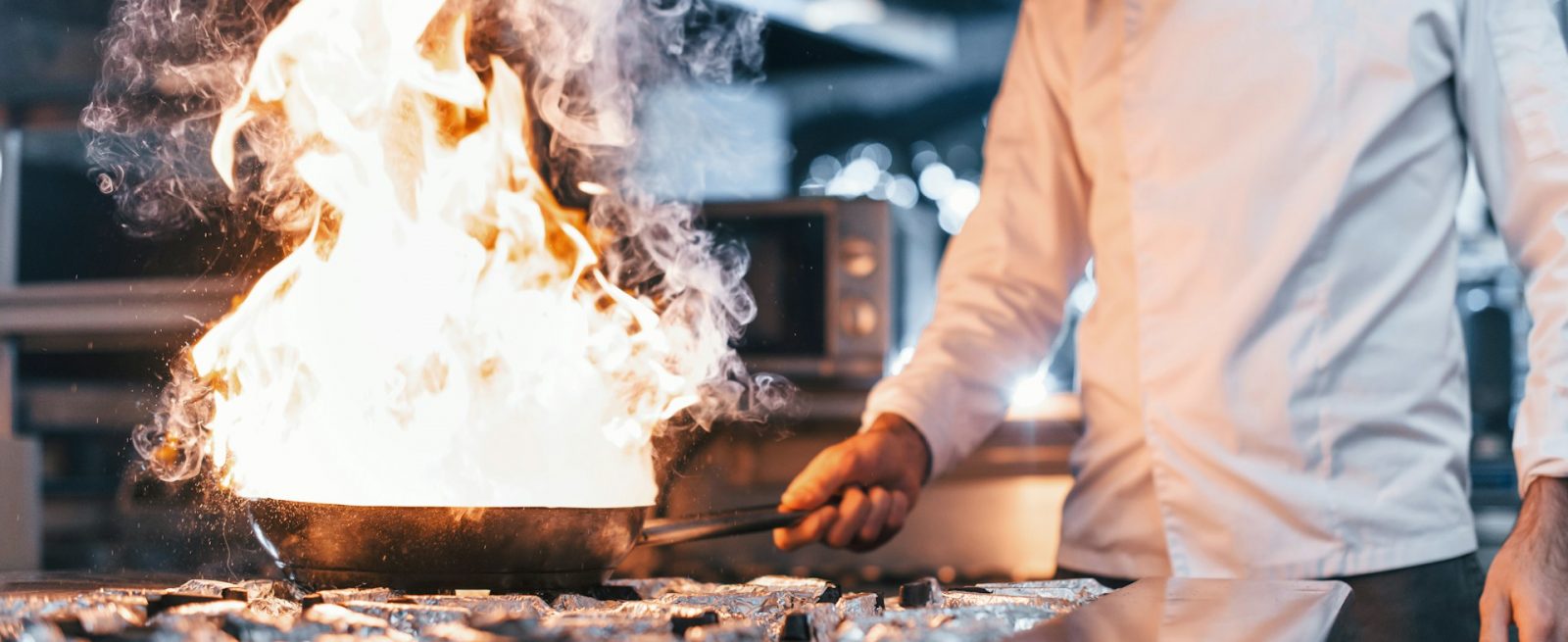Reducing Fire Risk in Your Commercial Kitchen
4 Min Read By Nathan Willard
As a restaurant manager, you want to do everything in your power to keep your commercial kitchen as well as your entire facility safe and welcoming to staff and patrons alike. However, fire hazards such as neglected kitchen equipment and grease buildup can lead to serious kitchen fires, threatening lives and livelihoods.
While there is no way to completely eliminate fire risk in commercial kitchens, you and your staff can take steps to reduce the risk. Regular in-house cleanings, education about common fire risks, and partnership with a professional kitchen exhaust cleaning company all help reduce the likelihood of kitchen fires.
Identifying Common Fire Hazards
Clear signs of fire risks in your commercial kitchen are not just dangerous; they often indicate that your facility has not received maintenance and cleanings at the required intervals set by the NFPA and therefore isn’t up to code. Here are some common fire hazards that you and your kitchen staff should look out for:
- Grease Buildup In or Around Equipment: Besides making your kitchen floors slippery and unsafe, grease buildup in or around kitchen equipment can pose a serious fire hazard. Under the high heat conditions of commercial kitchens, these materials are prone to ignition, resulting in considerable damage. Although the production of grease is unavoidable in most commercial kitchens, you can help minimize the risk of ignition by regularly cleaning common problem areas where grease tends to accumulate.
- Neglected and Inaccessible Areas: While it can be easy to get swept up in the busyness of your daily routine, it is important to remember that out-of-sight areas should never be out of mind. Neglected areas like ductwork, roofs, behind vent hood filters, and exhaust fans that lack easy access are prominent fire hazards. That being said, you can do your part to help reduce fire risk by scheduling preventative maintenance services with a professional kitchen exhaust cleaning company, and ensuring your kitchen equipment has the proper accessories for easy access—including access panels and hinge kits.
- Frayed Exhaust Fan Belts: As critical components of commercial ventilation systems, exhaust fans contribute significantly to improving your facility’s overall air quality. However, this crucial piece of equipment can stop working without warning when its fan belts aren’t inspected and replaced on a routine basis. Besides forcing you to invest in costly emergency repairs, neglected fan belts can negatively impact the functionality of your exhaust fan and even compromise your entire system. Although wear and tear on fan belts over time is unavoidable, replacing belts with visible cracks can go a long way in reducing fire risk.
- Worn Kitchen Equipment: Since most commercial kitchen equipment is used repeatedly on a daily basis, some degree of wear and tear is inevitable. This equipment can quickly become a fire hazard without proper care and attention. When electrical switches and sockets become loose, or wiring begins to fray, it can generate heat or even cause sparks, posing a risk to nearby flammable materials. Worn kitchen equipment can become hazardous, especially with continued use, so it’s important to inspect it regularly and be mindful of when it may need to be replaced.
- Poorly Maintained Kitchen Exhaust System: Similarly, kitchen exhaust equipment that isn’t cleaned and maintained on a regular basis can quickly become a serious fire hazard. For instance, a properly working exhaust fan pulls flammable materials such as grease, moisture, and smoke into the exhaust hood, and through the filters and ductwork where they accumulate over time. When this system is not cleaned on a routine basis, this buildup not only reduces its overall functionality but, more importantly, it becomes a dangerous fire hazard.
While there is no way to completely eliminate fire risk in commercial kitchens, you and your kitchen staff can drastically reduce the risk by keeping an eye out for potential fire hazards and taking proactive steps to help minimize fire risk in your facility.
Setting and Sticking to Kitchen Cleaning Schedules
Another way that you and your staff can be more proactive about minimizing fire risk in your commercial kitchen is by establishing and sticking to professional cleaning schedules. While recommended cleaning frequencies typically vary depending on cooking type and volume, the NFPA requires that your entire exhaust system be inspected for grease buildup in accordance with the following table.
There are countless factors that go into determining the most suitable kitchen exhaust cleaning and maintenance schedule based on your facility’s needs. Because of this, it’s in your best interest to partner with a professional kitchen exhaust cleaning company.
In addition to scheduling professional kitchen exhaust cleaning and maintenance on a routine basis, you should also prioritize end-of-day cleanings to prevent the long-term buildup of grease and other materials. While this task can be overwhelming initially, it becomes more manageable when you and your staff establish in-house cleaning schedules. For example, you can start by setting goals to clean frequently used equipment and grease-producing appliances daily, then build from there.
As you and your team begin establishing these cleaning schedules, you can also integrate daily preventative steps, such as double-checking that appliances are turned off and flammable materials are securely stored. Additionally, you can include regular fire safety tasks such as inspecting fire extinguishers to confirm they are functioning correctly and checking electrical wires for any fraying. This will help you identify potential fire hazards early and replace equipment as needed.
In-house commercial kitchen cleanings play a crucial role in reducing fire risk, but they are most effective when combined with professional cleaning and maintenance services. While staff can manage the routine tasks of wiping surfaces and handling spills, professional services tackle built-up grease, hidden contaminants, and fire hazards in exhaust systems, vents, and deep fryers. This combination helps ensure compliance with local codes and regulations. It can extend equipment lifespan and improve overall kitchen safety.


